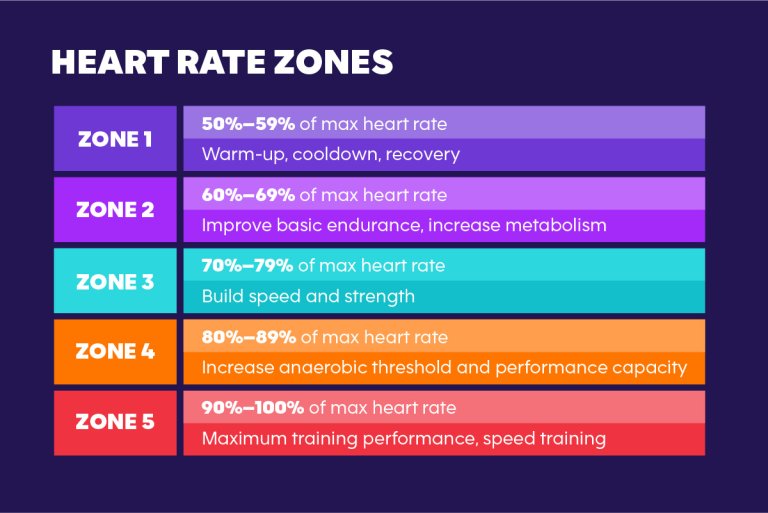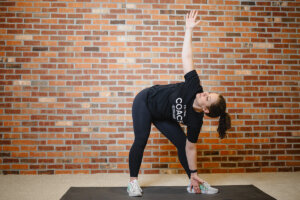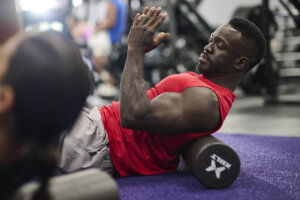Technology allows us to do incredible things, and when it comes to the health and wellness space, that is especially true. Heart rate training is one way to use data and technology to track and reach your fitness goals, whether that’s running a half marathon or simply trying to burn more calories during cardio.
Heart rate-based training became popular in the early ’90s as the endurance sports world turned to devices to make their training more precise. Since then, we’ve seen heart rate training weave its way into day-to-day fitness routines with the advent of more accessible smartwatches and affordable fitness trackers.
But let’s take a step back. What is heart rate training — and why is it beneficial?
What is heart rate training?
In short, heart rate training measures and monitors your heart rate during exercise in order to yield specific results and understand how efficiently your ticker is ticking. The goal is to keep your heart rate — the number of times your heart beats in a minute — within a set range, or “zone,” during a workout.
Why should I track my heart rate during exercise?
Heart rate training can be extremely beneficial when done correctly. By tracking, monitoring, and analyzing your heart rate activity, you can learn more about your body and how it works.
By elevating your heart rate, you’re making it work harder to circulate blood to your muscles in order to replenish their oxygen levels. You can use heart rates as a way to assess how much you’re challenging your cardiovascular system — without overexerting yourself. In doing so, you’re reducing the risk of fatigue and injury while improving the recovery process. And as we all know: Better recovery means your body is more ready for the next training session.
How to calculate your maximum and target heart rate zone
Most heart rate-based technologies use formulas that calculate your estimated maximum heart rate (HR max) using factors such as age and gender. This is then used to determine your target heart rate zone. However, you can also estimate your maximum heart rate and target heart rate zone on your own.
Maximum heart rate
First, let’s estimate your maximum heart rate based on your age. To do this, subtract your age from 220. For example, the estimated maximum age-related heart rate for a 30-year-old would be 190 beats per minute (220 – 30 years = 190 bpm).
Target heart rate zones
Once you have your HR max, you can determine your target heart rate zone. One option is to use a two-zone breakdown — moderate intensity and vigorous intensity — to simplify things for those who might be embarking on a new heart rate training journey.
Moderate-intensity training
For moderate-intensity physical activity, your target heart rate should be between 50% and 70%. For a 30-year-old, we’re looking at a target heart rate zone that sits somewhere between 95 and 133 bpm:
- 50% level: 190 x 0.50 = 95 bpm
- 70% level: 190 x 0.70 = 133 bpm
Vigorous-intensity training
For vigorous-intensity physical activity, you’ll simply change the percentages to 70% and 85%. For a 30-year-old, we’re looking at a target heart rate zone of 133 and 162 bpm:
- 70% level: 190 x 0.70 = 133 bpm
- 85% level: 190 x 0.85 = 161.5 bpm
However, there are also more advanced training plans that use a multi-zone approach. Scroll down for that breakdown.
It’s important to note that every person is different, and factors such as sex, fitness level, and genetics can all greatly affect your heart rate measurements. The gold standard for determining your max and target heart rates is through professional testing and monitoring. Another recommended option would be to ask a personal trainer or AF Coach. This person will be able to address any questions or discrepancies and get you on the right track. As you become more familiar with your heart rate, you’ll begin to naturally recognize the feeling of each heart rate zone, too.
Recovery heart rate time
Your recovery heart rate time is the amount of time it takes for your heart to return from peak bpm to its resting rate. The faster your heart recovers, the more efficient it is. As you use your heart rate zones to train overtime, your recovery heart rate time should become shorter and shorter.
HOW TO MEASURE YOUR HEART RATE BY HAND
While you can certainly use a fitness tracker or smartwatch to calculate your heart rate, it can be beneficial to also know how to measure your heart rate by hand.
Follow these steps to measure your heart rate (or someone else’s):
- To find your pulse, press the tips of your index (pointer) finger and middle finger gently against the side of your neck, just under your jawline — or on the inside of your wrist below the base of your thumb.
- Count the number of beats you feel for 15 seconds. Use a watch or timer to track the seconds accurately.
- Multiply the number of beats by 4. That number is your heart rate. (For example, if you count 18 beats in 15 seconds, multiply 18 by 4, for a total of 72 bpm.)
Creating a fitness plan with multi-zone heart rate training
As mentioned, we recommend beginners use the “moderate” and “vigorous” zones above before eventually transitioning to training plans that use a multi-zone approach. Below is an example of multiple heart rate zones that can be used for training. Here’s how they break down:
How long should I train in a heart rate zone?
The time you spend in each zone will vary, usually with more time spent in lower heart rate zones. How you approach this depends on many factors, including your fitness level and goals, but generally, a one-hour session might include:
- 10 minutes in Zone 1 warming up and cooling down
- 25 minutes in Zone 2
- 10 minutes pushing a little more Zone 3
- 5 minutes going hard in Zone 4
- 2 minutes going all-out in Zone 5
- 8 minutes working back down the zones, including a 2-minute cooldown in Zone 1
Make sure to monitor your heart rate throughout the session so you can become familiar with your body’s limits and avoid training too hard or overexerting yourself.

Low-impact exercises that will get your heart pumping
If you’re looking for an effective way to get your heart rate up without putting too much strain on your body, you can try some low-impact exercises that are easier on the joints and muscles. Here are some of the best low-impact exercises to get your heart rate up:
Bicycling: Cycling, whether on an outdoor or stationary bike, is an excellent cardio workout. It’s an effective way to increase cardiovascular fitness, burn calories, and tone muscles all at once.
Yoga: This practice focuses on stretching, breathing, and mind-body connection. It helps with flexibility, and while it might not seem like it, yoga can also get your heart rate up depending on the type of class you choose.
Swimming: This is a great full-body exercise that works all major muscle groups while toning and strengthening them. Plus, it’s low impact for the joints since they’re not supporting any weight in the water. For a varied routine, try mixing in different strokes and drills to challenge your body and stay motivated.
Walking or jogging: Going for a walk or jog is an easy way to increase your heart rate while still keeping it low impact — great for anyone with joint issues since there’s no shock absorption involved.
Kayaking, paddleboarding, or row machines: If you have access to water, kayaking and paddleboarding both provide a full-body workout with varying levels of intensity depending on how hard you choose to paddle. Rowing machines offer an efficient cardiovascular workout as well as a way to get stronger and build endurance — without putting any strain on the back or joints.
A final word on heart rate training in your fitness journey
Though data is great to have, it’s also important to listen to your body and how it feels. This not only helps you identify when your body is working hard but also when it’s time to take a break. Pairing accurate heart rate readings — and other data such as pace or distance — with your overall exertion level can give you a better understanding of how to adjust the intensity of your workouts and make sure they’re tailored to reach your desired goals.
New to heart rate training? Connect with a Coach at the AF gym nearest you who can answer all your questions.



